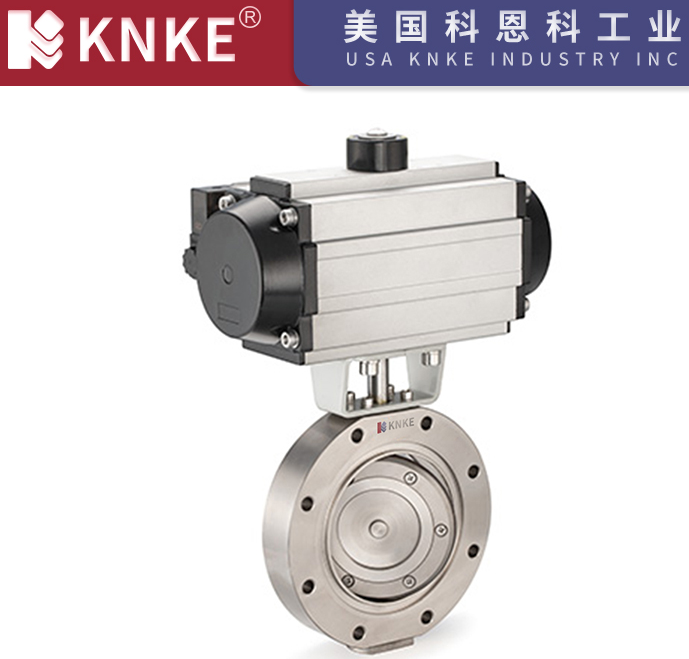Essential Precautions for Using Vacuum Butterfly Valves: Installation, Materials & Maintenance
Vacuum butterfly valves are vital components in many vacuum systems. They efficiently control the flow of gases or isolate sections of a vacuum line. While simple in design, their proper use and maintenance are crucial for achieving and maintaining desired vacuum levels, ensuring system integrity, and extending their lifespan. Ignoring key precautions can lead to leaks, system contamination, or even valve failure. Let’s look at the essential considerations for using these valves effectively.

1. Correct Installation is Key
Proper installation forms the bedrock of a vacuum butterfly valve’s performance. Any misstep here can compromise your vacuum system.
- Cleanliness: Always handle valves in a clean environment. Even tiny dust particles or fingerprints can create micro-leaks or contaminate your vacuum system. Wear gloves and use lint-free wipes if necessary.
- Alignment: Ensure perfect alignment between the valve and the connecting pipes or flanges. Misalignment puts stress on the valve body and seals, leading to leaks over time.
- Proper Fastening: Use the correct bolts and tighten them uniformly following the manufacturer’s specifications. Uneven tightening can distort the valve body or flange, affecting the seal.
- Flow Direction: Some butterfly valves are directional. Always check the manufacturer’s instructions for the correct flow orientation. Incorrect installation might impede performance or cause damage.
2. Material Compatibility and Vacuum Level
Not all vacuum butterfly valves are created equal. Matching the valve to your specific application is paramount.
- Vacuum Level: Different valves are designed for different vacuum ranges: rough, medium, high, or ultra-high vacuum (UHV). Ensure your valve’s materials and sealing mechanisms are rated for your system’s target vacuum level. For UHV applications, materials must have extremely low outgassing properties.
- Process Media: Consider the gases or chemicals that will pass through the valve. Ensure the valve body material (e.g., stainless steel, aluminum) and the elastomer seals (e.g., Viton, Kalrez, PTFE) are chemically compatible with your process media. Incompatibility can lead to seal degradation, leaks, or contamination.
- Temperature Range: Check the valve’s operating temperature range. High temperatures can degrade seals, while very low temperatures might make them brittle, both leading to leaks.
3. Operation and Maintenance Best Practices
Even after correct installation and selection, how you operate and maintain your valve significantly impacts its longevity and effectiveness.
- Gentle Operation: Avoid forcing the valve open or closed. Operate it smoothly and steadily. Abrupt movements can damage the sealing mechanism or the actuator.
- Avoid Over-Torquing: If you’re using a manual valve, don’t over-tighten the handle or actuator. Excessive force can deform the disc or damage the seat, preventing a proper seal.
- Regular Inspection: Periodically inspect the valve for any signs of wear, damage, or contamination. Pay close attention to the O-rings and seals.
- Seal Replacement: Seals are wear items. Replace them according to the manufacturer’s recommended schedule or at the first sign of degradation. Use only genuine replacement parts.
- Cleaning: If the valve needs cleaning, use only approved, vacuum-compatible cleaning agents. Avoid harsh chemicals that could damage seals or leave residues.
4. Leak Detection and Troubleshooting
Even with all precautions, leaks can occur. Knowing how to detect and address them is critical.
- Routine Leak Checks: Integrate routine leak detection into your maintenance schedule. Use a helium mass spectrometer leak detector for high and ultra-high vacuum systems. For rough vacuum, soap solution or a sniffer can be effective.
- Listen for Hissing: In rough vacuum, a subtle hiss might indicate a large leak.
- Temperature Changes: A cold spot on the valve when the system is under vacuum could indicate a leak point as gas expands.
- System Performance: A sudden inability to reach target vacuum levels or a significantly slower pump-down time often points to a leak.
Conclusion
Vacuum butterfly valves are robust tools when used correctly. By adhering to these essential precautions—focusing on proper installation, material compatibility, careful operation, and proactive maintenance—you can ensure your vacuum system performs optimally. This approach will maximize valve lifespan and maintain the integrity of your vacuum environment. Do you have specific challenges with your vacuum valve applications?
